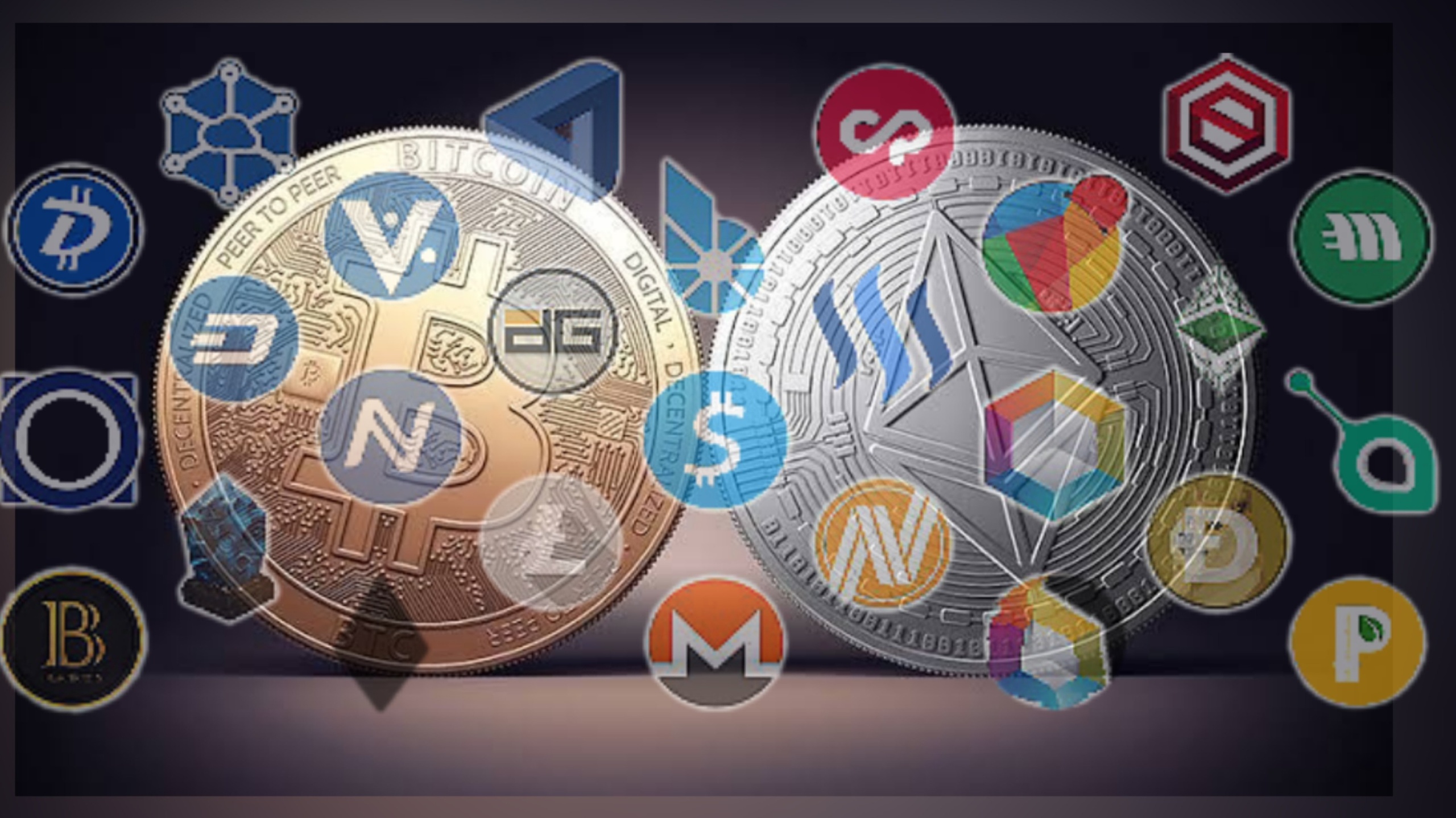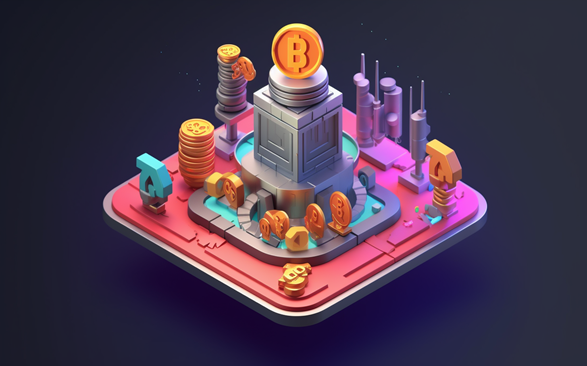Cryptocurrency, since the inception of bitcoin (BTC) in 2009, has become a global spectacle. While BTC remains the flagship cryptocurrency and the largest by market capitalization, there is a huge number of cryptoassets launched after it. These cryptocurrencies, collectively known as altcoins, have continued to gain adoption and prominence as they have several applications as well as present opportunities for market participants.
Notably, data shows that there are over 20,000 altcoins in the crypto market at the time of writing. As the need for asset tokenization increases, more altcoins are expected to hit the market. Whether altcoins will mean your boom or doom as a crypto investor or hodler will depend largely on your understanding of their strengths, weaknesses, opportunities, and threats (SWOT). This article is a guide for crypto investors and hodlers dealing with or looking to deal with altcoins.
What are altcoins?
Short for alternative coins, altcoins are all cryptocurrencies other than BTC. In other words, altcoins are alternatives to BTC. Although BTC is the largest cryptocurrency by market cap and the first to gain mainstream adoption, it has several flaws including slow processing speed and high transaction fees.
More so, the Bitcoin blockchain lacks smart-contract functionality. These and many more reasons gave rise to altcoins with each having its unique features, including tokenomics, applications, and use cases. Some of the leading altcoins by market capitalization are Ether (ETH), Bitcoin Cash (BCH), Ethereum Classic (ETC), BNB, XRP, Litecoin (LTC), Cardano (ADA), Solana (SOL), Polkadot (DOT), Avalanche (AVAX), and multiple others, each with their distinct design and purposes.
Read also: What is cryptocurrency?
Strengths of altcoins
The strength of altcoins mainly lies in the significant functions they play in the crypto ecosystem. Below are the key factors that make altcoins attractive to crypto investors:
Diversification: Before the emergence of altcoins, crypto investors were exposed to only one cryptoasset—BTC. Therefore, altcoins offer investors and traders a way to diversify their cryptocurrency portfolios beyond BTC, reducing their risk by spreading investments across different cryptoassets.
Innovation: Altcoins introduce new technologies and features that are lacking with Bitcoin, such as smart contracts, privacy features, high scalability, or faster transaction speeds. These innovations go further to facilitate the growth of the crypto industry. Notably, Ethereum introduced smart contracts, enabling decentralized finance (DeFi) and applications (dApps).
Specialization: Several altcoins are designed for specific applications, enabling cryptocurrencies to be useful in addressing real-world problems more effectively. Said differently, altcoins can be designed to provide solutions tailored to a particular industry or niche. For example, Polkadot focuses on interoperability, facilitating communication and data transfer between different blockchains. Meanwhile, other altcoins such as Monero and Zcash emphasize privacy features, offering users enhanced anonymity in their crypto transactions.
Potential for high ROI: Another notable strength of altcoins is their capacity to give investors a good return on investments. In other words, these cryptoassets can experience significant price volatility, potentially offering investment opportunities for those seeking higher returns compared to a more established cryptocurrency like BTC.
Weaknesses of altcoins
Altcoins, while significant in the cryptocurrency market, also have notable weaknesses which are discussed below:
High Price Volatility: Typically, altcoins exhibit extreme price fluctuations, making them high-risk investment options compared to BTC. That is, if the BTC price tends to decline by 10%, most altcoins could dip by over 20%. Owing to this, most altcoins cannot be adopted as a store of value. However, altcoins’ high price volatility could cause investors to record both gains and losses.
Project Viability: The lack of sustainable development and clear use cases is another major weakness of some altcoins. Consequently, altcoin projects with this deficiency do not always stand the test of time and often lead to significant losses for investors.
Low Liquidity: There are usually limited trading activities or fewer buyers and sellers for many altcoins. This lack of liquidity can pose several challenges for investors such as the risk of trapped funds, limited market access, wider bid-ask spreads, and difficulty in buying and selling amongst others.
Price Manipulation: Because some altcoins have illiquid markets, relatively small trades can significantly impact their prices. This can further create opportunities for price manipulation by whales or large holders, leading to unpredictable and unfavorable price movements. Notably, BTC price also experiences the weakness of price manipulation from time to time but this issue appears to be more common with illiquid altcoins.
Lack of Regulatory Clarity: Unlike BTC, altcoins frequently face regulatory scrutiny and changing legislation, creating uncertainties for investors. Over the years, several altcoins have been labeled securities by the United States Securities and Exchange Commission (U.S. SEC), including XRP, ADA, ALGO, etc. Though in July 2023 a federal judge ruled that XRP was not a security when sold to retail investors using digital asset exchanges or when used for service providers but a security when sold to institutional investors, there is still some level of uncertainty in the regulatory environment.
Read also: What is Blockchain Technology? Meaning, Types, and Use Cases
Opportunities with altcoins
Altcoins introduce several opportunities in the crypto industry which are elaborated on below:
- Crypto market growth and ecosystem building: Crypto mass adoption cannot be achieved with BTC alone in the picture. Factually, the cryptocurrency market saw its expansion following the emergence of altcoins. The launch of more innovative altcoin projects therefore could further boost the crypto economy. Moreover, altcoins often foster strong and passionate communities. These communities can contribute to the development, adoption, and growth of the overall crypto ecosystem.
- Technological advancements: Altcoins are often the breeding ground for technological innovations in the crypto industry. They can pioneer improvements in blockchain technology, transaction speed, scalability, security, privacy features, etc.
- Financial inclusion: Altcoins have the potential to extend financial services to underserved or unbanked populations. In regions with limited access to traditional banking, altcoins can offer a means of conducting financial transactions, accessing global markets, and participating in the digital economy. This can lead to greater financial inclusion and economic empowerment.
- Investment diversification: These alternative assets also provide investment diversification opportunities. Investors looking to diversify their cryptocurrency portfolios beyond BTC can explore altcoins with different use cases and risk profiles. Diversification can help manage risk and potentially enhance returns on investment.
- Economic experimentation: Altcoins allow for experimentation with economic models, governance systems, and consensus mechanisms. Projects can test different approaches to see what works best in various contexts. This experimentation can lead to valuable insights for the broader blockchain and cryptocurrency space.
Threats of altcoins
While altcoins offer various opportunities and innovations they also pose several threats and challenges to the cryptocurrency industry. Here’s an highlight of these threats:
Market Saturation: The proliferation of altcoins has led to market saturation. With thousands of different coins and tokens available, it becomes challenging for investors and users to distinguish solid projects from scams.
Competition and Fragmentation: The altcoin market is highly competitive. With each project vying for attention and investors, it can create a fragmented crypto ecosystem. This fragmentation may lead to a lack of standardization and interoperability, hindering the seamless integration of different cryptocurrencies and blockchain platforms.
Scams: Unfortunately, the cryptocurrency space has witnessed (and continues to witness) numerous scams related to altcoins. Developers or teams have been known to abandon projects after raising funds, leaving investors with worthless tokens. Such fraudulent practices can damage the reputation of the entire crypto industry.
Read also: Top 4 Safety Tips in Crypto Investment You Should Know
Conclusion
To wrap it up, altcoins offer diversity and innovation in the cryptocurrency space, potentially providing unique solutions and investment opportunities. However, investors should be aware of the weaknesses associated with altcoins including low liquidity, lack of regulatory clarity, high price volatility and manipulation. This is why it could be said that altcoins have brought both boom and doom to the crypto market at various levels and degrees. Despite its weaknesses, altcoins can contribute to the growth of the crypto market as well as enhance financial inclusion and technological advancement. Conversely, scams, market saturation, competition, and fragmentation are their key threats.
Read also: Major Use Cases of Cryptocurrencies in Africa
Credit: Ndianabasi Tom
A crypto journalist and content writer who has been talking about cryptocurrency and blockchain technology since 2018, Ndianabasi is a Writer at Crypto Asset Buyer (CAB).
Discover more from Crypto Asset Buyer
Subscribe to get the latest posts sent to your email.




